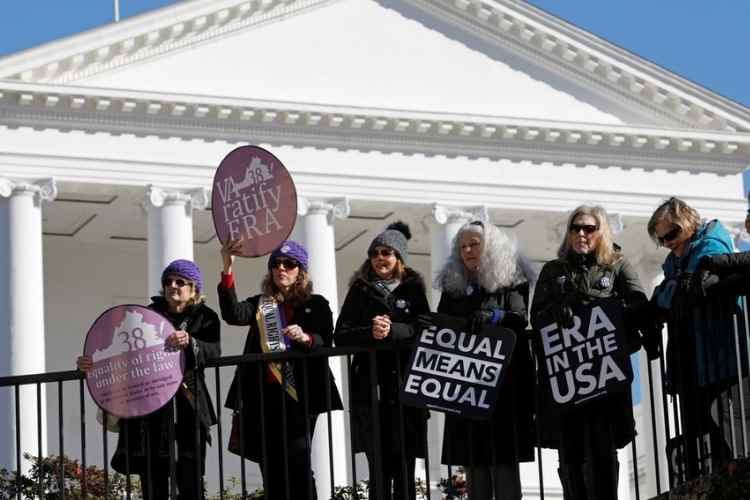About Equal Rights Political Party
The Equal Rights political party was the name for various political parties in the United States during the nineteenth century. The first party was Locofocos at the time from the 1830s and 1840s. After that, the Anti-Rent party during the time of the Anti-Rent war was also known by this name from about the 1840s and 1850s.
Another party which was known by this name was Victoria Woodhull for President of the United States and Frederick Douglass for vice president of the United States at the time of the 1872 presidential elections. This party was also known by the name People’s party, the Cosmo-Political party, and the National Radical Reformers.
The fourth party was run by Belwa Ann Lockwood for President in the 1884 and 1888 presidential elections and Marietta Stow and Alfred H. Love for the vice president respectively. This party was also known by the name National Equal Rights Party. At that time Emma Beckwith ran for the mayor of Brooklyn under this party.
Currently, in 2021, the fifth Equal Rights party was formed again.
RELATED – Conservative Party of Canada
The Background: How was the party formed?
By the mid-1830s, the powerful Democratic party of the state was also ruined by internal dissent. There was a division into the establishment of the ‘Tammany’ wing and an ‘antimonopolist’ faction. Shortly after the 1834 election, the party split and the reason was the legislative chartering of incorporations, especially banks. After the lead of the national Democratic Party during the time of the presidency of Andrew Jackson’s “war” on the Bank of the United States, the antimonopolist of New York took exception to the easy incorporation policies of the state legislature. They argued that the actions of the mainstream Democrats who controlled the assembly gave legislative sanction to a monopoly of the State Bank. However, most of them were unsound and engaged in dangerous speculative practices. This was the reason the antimonopolists gathered enough support so that they would be able to get Democratic candidates in the 1834 state elections to pledge their opposition to Monopoly and the lacs, corrupt incorporation policies of previous legislative sessions.
When the election was over, most of the victorious candidates instantly recanted these antimonopoly pledges. The antimonopolists of New York City said that stricter measures were necessary to prevent what they saw as rampant corruption and dangerous policies that were issued from Albany. On 29 October 1835, at a party meeting at Tammany Hall, they have to elect an antimonopolist to the chair and also reclaim the democratic party of the state by nominating a slate of antibank candidates for the upcoming elections. They have received warnings for this attempted insurgency. The Tammany leaders adjourned the meeting early and they also turned off the gas lamps upon exiting the building. But eventually, they were prepared for this so the insurgents lit the torches with the new “Locofocos” matches and this name was given to their movement. In the match-lit confines of Tammany, the locofoco Democrats began to nominate their antimonopoly candidates to oppose the Tammany Democrats. Their actions produced about 4000 votes in the city but somewhat disappointing results. However, it was strong enough to convince Locofoco leaders that they have enough support to take the next and radical step of forming a political party separately. In December 1835, at a meeting held at Military and Civic hotel, the locofoco leadership agreed to repudiate Tammany hall’s leadership and so they rename their movement as Equal Rights Party.
Most Important Members of that time
Byrdsall, Fitzwilliam- He was one of the earliest active members among the antimonopoly Democrats and instantly became a leader of the Equal Rights Movement in the early time of its organization. He was elected as recording secretary of the Equal Rights party at that time. Though his history of the party was biased and is a completely primary account of the movement.
Commerford, John: He was a newspaper editor and an important leader of the labor movement of 1830 in New York City. He served as the second President of the General Trades’ Union of the city by succeeding Ely Moore. Commerford especially in the columns of his newspaper named The Union supported the alliance between the working men and the Locofoco insurgency.
Ming, Alexander: Ming was a New York printer and an anti-monopoly Democrat until his defection from the organization in 1835. He was an important member of the locofoco insurgency and he was the key supporter of the move to make a separate political party. He was the candidate for mayor of the Equal Rights party of New York City in the 1835 election.
Bibliography on Equal Rights Party
Some of the books in which there is detailed information about the Equal Rights party are as follows:
Byrdsall, Fitzwilliam. The History of the Locofoco or Equal Rights Party consists of its Movements, Conventions, and Proceedings with Short Characteristic Sketches of its prominent men.
Hugins, Walter. Jacksonian Democracy and the Working Class: A Study of the New York Workingmen’s movement from 1829 to 1837. This book was written by Palo Alto, CA: Stanford University press in 1960.
Wilentz, Sean. Chants Democratic: New York City and the Rise of the American Working Class from 1788 to 1850. The book is published in New York Oxford University press in 1984.
Summary
On 15 September 1836, 93 representatives from throughout the state of New York were summoned in the Western town of Utica and unanimously resolved to “Institute a political party separate and different from all existing parties or factions in this state”. This declaration proclaimed the independent political existence of the Equal Rights Party.
So overall this article was about the Equal Rights party and the brief history of how it began with Locofocos.






